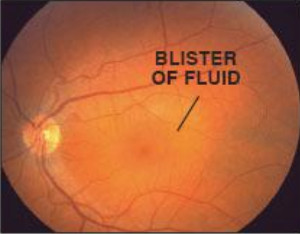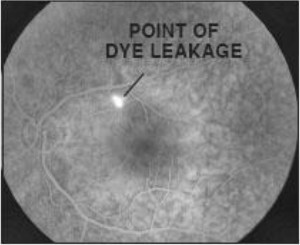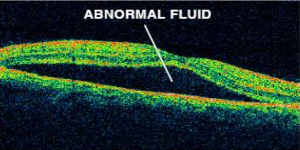Central Seruos Retinopathy
(CSR)

Central Serous Retinopathy (CSR) is a condition in which a small pool of fluid accumulates under the
macula. A defect in the normally water tight layer beneath the retina allows the leakage of fluid
which then collects under the retina. This forms a blister-like elevation which alters the function of
the retina, and typically becomes noticeable when central vision is affected. CSR most commonly
occurs in males in their 30’s to 50’s. The cause of CSR is unknown, although in some patients it is
associated with corticosteroid use, including inhalers or skin creams. CSR has been commonly
associated with “type A” personalities.
Symptoms
The symptoms of an eye affected by CSR are blurred vision, distortion, or a central grey or dark spot.
Vision can range from 20/20 to 20/200. Colour vision may also be affected



Diagnosis
The diagnosis of CSR is usually made by its characteristic clinical appearance. Fluorescein
Angiography (FFA)may be necessary to confirm the diagnosis. In Fluorescein Angioraphy, a sye is
injected into an arm vein, and photos are taken as the dye passes through through the retinal blood
vessels. During this test the defect in the layer beneath the retina can be indentified, as leakof dye is
typically seen. Optical Coherence Tomography (OCT ) which shows a cross section of the retina, can
also be useful in diagnosing CSR.
Treatment
In the majority of cases no treatment is required, and the condition resolves spontaneously within
several months. In some cases laser treatment to cauterize the leakage source can speed resolution
of the fluid blister and improve vision. Photodynamic therapy, typically used in the treatment of Wet
AMD, has been used in some individuals where CSR has persisted (see section on AMD).
Prognosis
The prognosis for CSR is generally excellent. Over 90% of patients regain 20/30 vision or better
within 6 months. In some people, the condition will resolve leaving a very subtle visual
imperfections. In a small minority of patients, CSR may become a recurrent problem.
